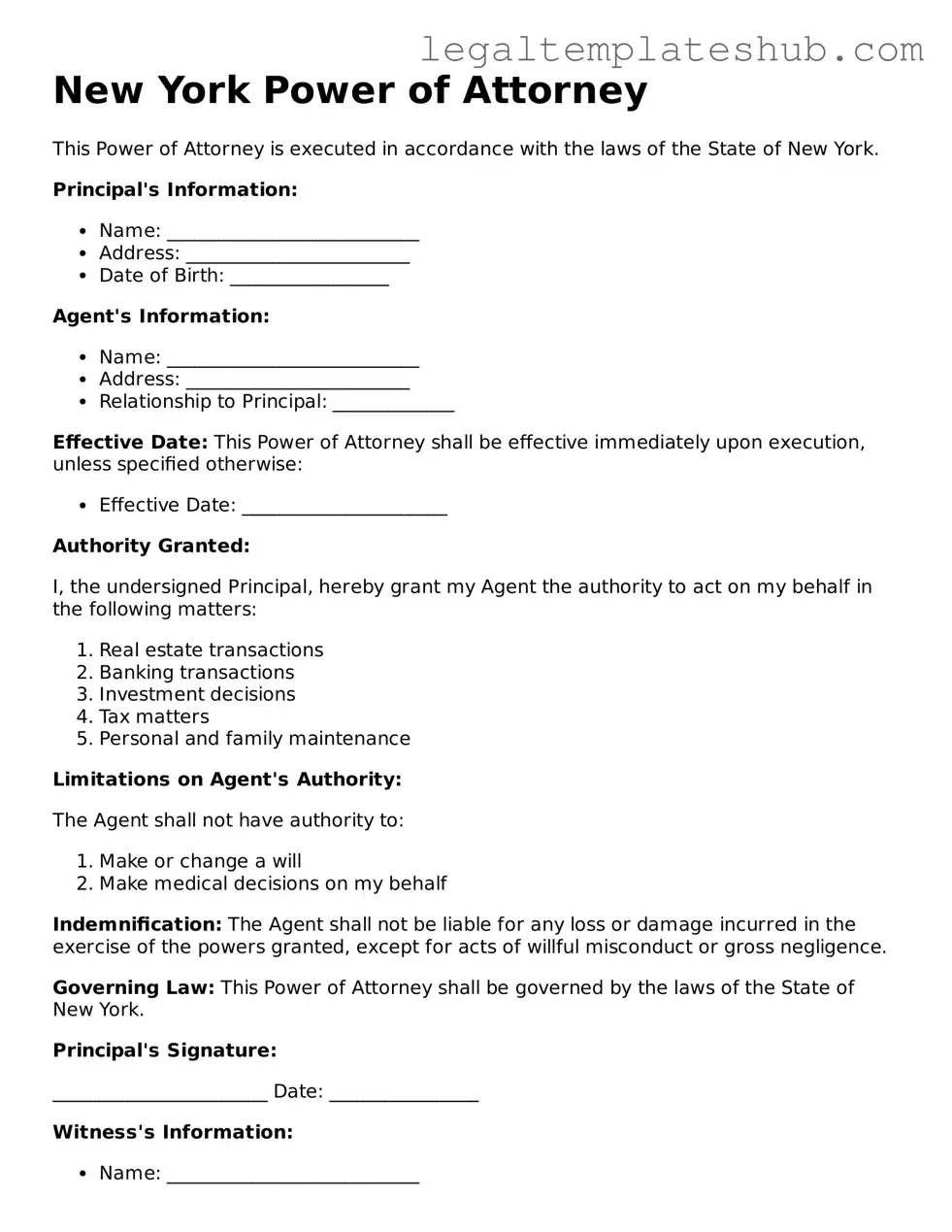Instructions on Filling in New York Power of Attorney
Completing the New York Power of Attorney form is a straightforward process. Follow the steps below to ensure that the form is filled out correctly. Make sure to have all necessary information ready before you begin.
- Obtain the New York Power of Attorney form. You can download it from the New York State website or request a physical copy from a legal office.
- Fill in the name of the principal at the top of the form. This is the person granting the power of attorney.
- Provide the principal’s address. Include the street address, city, state, and zip code.
- Enter the name of the agent. This person will act on behalf of the principal.
- Include the agent’s address, ensuring you list the street address, city, state, and zip code.
- Specify the powers being granted. You can choose to grant general powers or specific powers. Clearly mark the appropriate boxes.
- If desired, add any limitations or conditions regarding the powers granted. Write these in the designated section.
- Indicate the effective date of the power of attorney. This can be immediate or set for a future date.
- Sign and date the form at the bottom. The principal must sign it in the presence of a notary public.
- Have the notary public witness the signature. The notary will then sign and stamp the form, validating it.
Once the form is completed and notarized, it is ready for use. Ensure that copies are distributed to the agent and any relevant parties to ensure they are aware of the authority granted.
